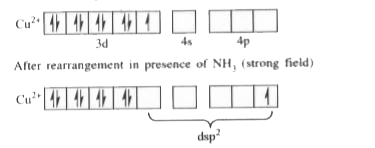A
B
C
D
Text Solution
Verified by Experts
The correct Answer is:
|
Topper's Solved these Questions
CO-ORDINATION COMPOUNDS
AAKASH SERIES|Exercise PRACTICE SHEET - 3 ( Match the following questions)|2 VideosView PlaylistCO-ORDINATION COMPOUNDS
AAKASH SERIES|Exercise PRACTICE SHEET - 3 (Integer answer type Questions)|5 VideosView PlaylistCO-ORDINATION COMPOUNDS
AAKASH SERIES|Exercise PRACTICE SHEET - 3 ( Linked Comprehension type questions Passage - 1:)|4 VideosView PlaylistCHEMISTRY IN EVERYDAY LIFE
AAKASH SERIES|Exercise PRACTICE SHEET - 2 (PRACTICE SHEET -2 (INTEGER ANSWER TYPE QUESTIONS))|7 VideosView PlaylistCOMPLEX COMPOUNDS
AAKASH SERIES|Exercise PRACTICE EXERCISE|45 VideosView Playlist
Similar Questions
Explore conceptually related problems
Knowledge Check
Similar Questions
Explore conceptually related problems
